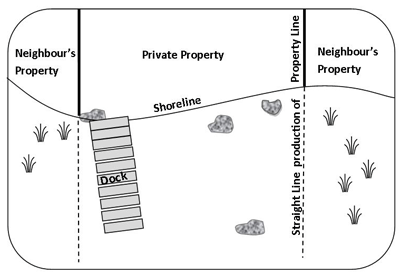Maintain, repair or replace erosion control structures on shore lands
The rules for working on existing erosion control structures such as retaining walls on shore lands in Ontario.
The basics
In Ontario, the beds of most water bodies are Crown land.
The ministry manages these lands under the Public Lands Act.
The Public Lands Act applies to the use of provincial Crown land and shore lands. There are some exceptions, including provincial parks and conservation reserves.
The Act does not apply to the use of federal lands and waterbodies (e.g., the Trent-Severn and Rideau Canal waterways).
You may not need a work permit to maintain, repair or replace erosion control structures, if you follow the rules listed below, and you register with the ministry.
You will need a work permit if you want to build a new, or expand an existing, erosion control structure.
Source law
This is a summary of the provincial laws. You can find a complete set of provincial rules under the act in:
Lake Simcoe
For property within the Lake Simcoe watershed but not within the jurisdiction of the Lake Simcoe Region Conservation Authority, you need a work permit to proceed.
Learn more: Lake Simcoe Region Conservation Authority
Learn more: The Lake Simcoe Protection Plan (PDF)
The rules
You do not need a work permit under the Public Lands Act, if you follow all of these rules. You:
- are the waterfront property owner or conducting work on behalf of the property owner
- keep the same length, width and footprint of the existing erosion control structure
- properly install and maintain sediment controls around the area if sediments (e.g., sand, silt) will be disturbed, and remove them only when work is complete and sediments have settled
- dispose of the plants/material you remove on dry land to prevent it from re-entering the water
- use, operate or store any wheeled or tracked machinery/equipment on dry land, or on a barge or vessel
- always register your work with the ministry before work begins
- keep the confirmation of registration onsite and make it available, if requested
- do not carry out work during fish spawning season or during the time of other critical fish life stages as set out in the In-water Work Timing Window Guidelines
See: In-water Work Timing Window Guidelines (PDF)
How to register
Step 1: Submit your notice of activity form online using the Natural Resources Information Portal (NRIP)
- Registration is free
Step 2: Receive confirmation
- You will receive an official confirmation of registration by email
- Keep your copy as proof of registration
- If work is not completed within 1 year of registration, submit a new notice of activity form
If you cannot apply online:
- Download the Notice of Activity (Public Lands Act) registration form and user guide
- Submit the form and any supporting documents to your local ministry work centre
- Wait for confirmation
When you need a work permit
You will need a work permit to maintain, repair or replace erosion control structures, if you:
- want to build a new erosion control structure
- want to expand an existing erosion control structure
- can't meet all of the rules in this article
If you do not register the activity, can't follow the rules or work without a permit when one is needed, you may be charged and fined.
How to get a work permit
To get a work permit:
- download and complete the Application for Work Permit Part 1 (PDF)
- download and complete Application to do Work on Shore Lands Part 3 (PDF)
- include proof of ownership (e.g. deed)
- include sketches/drawings/survey plans indicating your property lines and where the work is taking place
- submit complete application by mail or in person to a local ministry office
Additional information may be required.
Waterfront property owners
You can only conduct work on shore lands directly in front of your property or where your property is fronted by a road allowance or shoreline reserve.

This diagram is for illustration purposes only.
You may also want to discuss the project with neighbours before starting work. You could be found responsible for damage to another person’s property associated with this work.
Natural shore lands
Use native trees and shrubs to prevent erosion, reduce nutrient runoff and provide habitat for wildlife.
Wild rice
Avoid removing wild rice.
Read: Wild Rice Harvesting Act
Suspected contamination
If you suspect that the area could be contaminated, you should contact a local Ministry of the Environment and Climate Change (MOECC) Office.
Using machinery
Machinery should be kept in clean condition and free from fluid leaks.
Report a spill
To report a spill, call the Spills Action Centre at 1-800-268-6060.
Ottawa River
For properties along the Ottawa River, you must contact Infrastructure Ontario Property Services for more information:
- e-mail: Infrastructure Ontario
- telephone: 1-877-863-9672
- fax: 416-325-4646
Related requirements
Before you start any work, find out whether additional authorizations are required.
For example, you may need to check with:
- local conservation authority
- Ontario Ministry of the Environment
- Fisheries and Oceans Canada
- Transport Canada
- local municipality/township
- Ministry of Natural Resources for endangered and protected species
- Other provincial ministries
- Ontario One Call (to see if hydro/gas lines could be impacted)
Remember that maintaining, repairing or replacing erosion control structures on shore lands does not give you any right, title or interest in the Crown land.